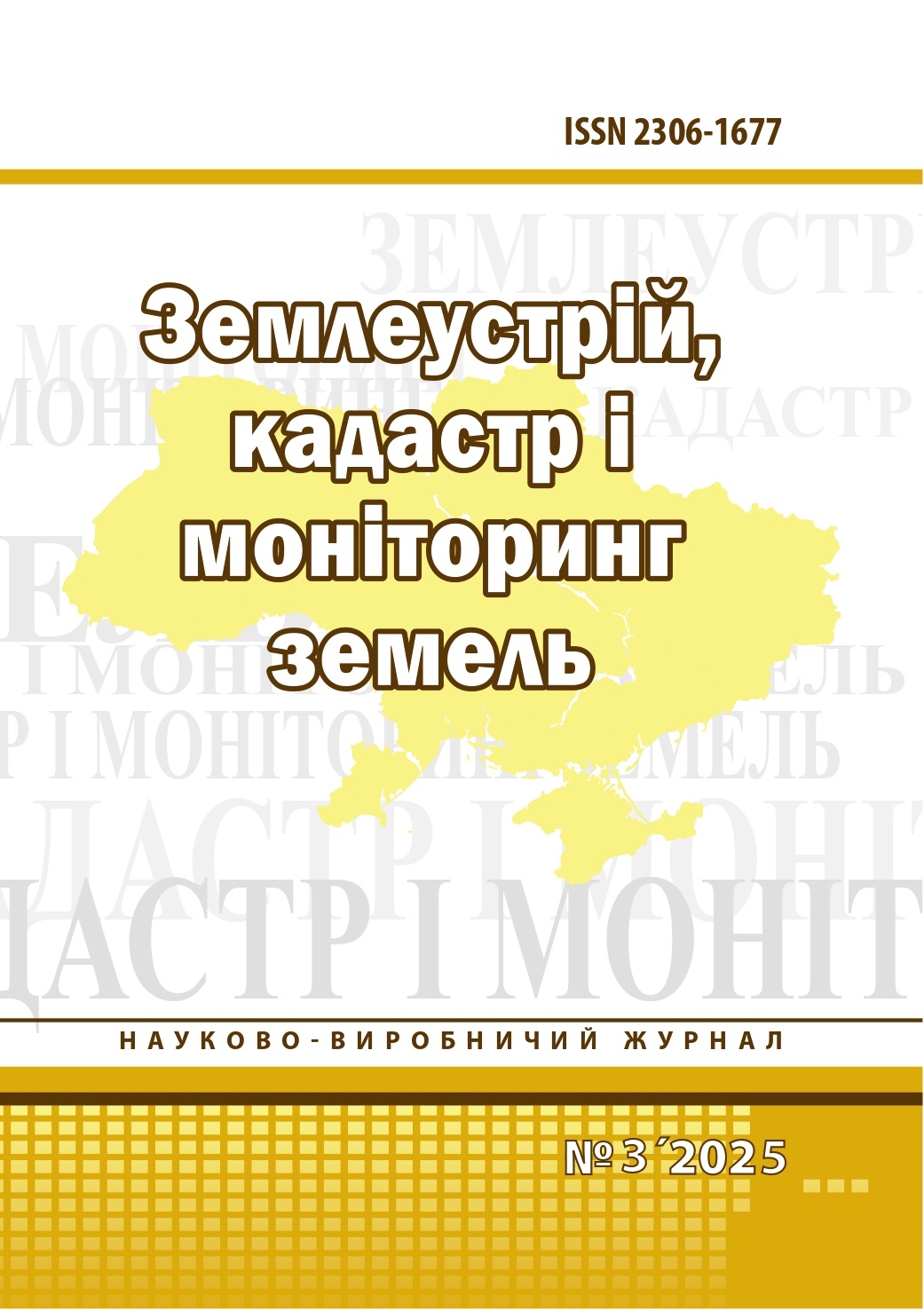Публічно-приватне партнерство: можливості для України
DOI:
https://doi.org/10.31548/zemleustriy2024.04.02Ключові слова:
економічний механізм, точка стагнації, державно-приватне партнерство, сільські території, синергетичний ефектАнотація
У зв’язку з нагальною необхідністю реформування державного сектору економіки, відновлення інфраструктурних об’єктів, залучення до української економіки іноземних інвестицій, формування соціально спрямованої економіки великого значення набуває розвиток партнерських взаємовідносин між державою та приватними особами (публічно-приватне партнерство). Ефективність таких відносин залежить передусім від ефективності правового регулювання та розвиненості організаційно-економічної структури. Згідно із Законом України «Про державно-приватне партнерство», що головним чином регулює цей вид співпраці, відповідний механізм передбачає співробітництво між державою, територіальними (державними партнерами) та юридичними (крім державних та комунальних підприємств) або фізичними особами – підприємцями (приватними партнерами). Орієнтація механізму на співпрацю з територіальними громадами актуалізує його з огляду на швидкий перебіг реформи децентралізації влади в Україні. На рівні окремої територіальної громади практичне застосування будь-яких форм ППП потребує, аби представники місцевої влади володіли навиками правового, економічного, соціально-комунікативного характеру для ініціювання партнерства (внесення пропозицій та аналіз ефективності запропонованих проектів), вибору приватних партнерів (одного або декількох) та укладання з ними договорів. В рамках такого партнерства органи державної влади або місцевого самоврядування передають частину своїх повноважень приватному партнеру (одному або декільком). Відповідно на приватного партнера (особу або підприємство) покладається обовязок реалізації проекту, покликаного вирішити частину соціально-економічних чи екологічних проблем територіальної громади. |
Посилання
Martinova, N. O. (2014). Use of the European models of local partnerships in the field of rural development and its adaptation to national legislation [Vykorystannia ievropejs'kykh modelej lokal'noho partnerstva u sferi rozvytku sil's'kykh terytorij ta ikh adaptatsiia do natsional'noho zakonodavstva]. Current Problems of State and Law, 72, 274–279.
Peters, B. G. (1998). With a little help from our friends’: public-private partnerships as institutions and instruments. In Partnerships in urban governance: European and American experiences. London: Palgrave Macmillan UK, 11-33.
Bovaird, T. (2004). Public-private partnerships: from contested concepts to prevalent practice. International Review of Administrative Sciences, 70 (2), 199–215. doi: 10.1177/00208523040442.
Kwak, Y. H., Chih, Y., Ibbs, C. W. (2009). Towards a comprehensive understanding of public private partnerships for infrastructure development. California Management Review, 51 (2), 51–78. doi: 10.2307/41166480/
Hodge, G. A., Greve, C. (2007). Public-private partnerships: an international performance review. Public Administration Review, 67 (3), 545–558. doi: 10.1111/j.1540-6210.2007.00736.x.
Sorensen, E., Torfing, J. (2009). Making governance networks effective and democratic through Metgovernance. Public Administration, 87 (2), 234–258. doi: 10.1111/j.1467-9299.2009.01753.x.
Christopoulos, S., Horvath, B., Kull, M. (2012). Advancing the governance of cross‐sectoral policies for sustainable development: A metgovernance perspective. Public Administration and Development, 32 (3), 305–323. doi: 10.1002/pad.1629.
LaFrance, J., Lehmann, M. (2005). Corporate awakening - why (some) corporations embrace public-private partnerships. Business Strategy and the Environment, 14 (4), 216–229. doi: 10.1002/bse.471.
Glasbergen, P., Biermann, F., Mol, A.P. (Eds.). (2007). Partnerships, Governance and Sustainable Development: Reflections on Theory and Practice. Cheltenham: Edward Elgar, 328.
Rohova, O. V. (2012). Innovative approaches to interpretation of the concept of public-private partnership [Innovatsijni pidkhody do traktuvannia poniattia «publichno-pryvatne partnerstvo»]. Journal of Dnipropetrovsk University, 6 (3), 206–212.
Waldrop, M. M. (1992). Complexity: the emerging science at the edge of order and chaos. New York: Simon & Schuster, 376.
Bar-Yam, Y., McKay, S. R., Christian, W. (1998). Dynamics of Complex Systems (Studies in Nonlinearity). Computers in Physics, 12 (4), 335–336. doi: 10.1063/1.4822633.
Goldstein, J. (1999). Emergence as a construct: history and issues. Emergence, 1 (1), 49–72. doi: 10.1207/s15327000em0101_4.
Arthur, W. B. (1989). Competing technologies, increasing returns, and lock-in by historical events. The Economic Journal, 99 (394), 116–131. doi: 10.2307/2234208.
Anderies, J., Janssen, M., Ostrom, E. (2004). A framework to analyze the robustness of social-ecological systems from an institutional perspective. Ecology and Society, 9 (1), 18. doi: 10.5751/ES-00610-090118.
Adger, W. N. (2000). Social and ecological resilience: are they related? Progress in Human Geography, 24 (3), 347–364. doi: 10.1191/030913200701540465.
Funtowicz, S., Ravetz, J. R. (1994). Emergent complex systems. Futures, 26 (6), 568–582. doi: 10.1016/0016-3287(94)90029-9.
Kaufman, A. S. (1993). The origins of order: self-organization and selection in evolution. New York: Oxford University Press, 709. doi: 10.1142/9789814415743_0003.
Levin, S. A. (2005). Self-organization and the emergence of complexity in ecological systems. Bioscience, 5 (12), 1075–1079. doi: 10.1641/0006-3568(2005)055[1075:SATEOC]2.0.CO;2.
Prigogine, I. (1987). Exploring complexity. European Journal of Operational Research, 30, 97–103. doi.org/10.1016/0377-2217(87)90085-3.
Sardar, Z., Ravetz, J. R. (1994). Complexity: fad or future? Futures, 26 (6), 1–5. doi: 10.1016/0016-3287(94)90028-0.
Bar-Yam, Y. (1997). Dynamics of complex systems. New York: Addison-Wesley, 865.
Ambrosio-Albala, M., Bastiaensen, J. (2010). The new territorial paradigm of rural development: theoretical foundations from systems and institutional theories. Belgium: University of Antwerp, 67.
Haan, J. (2006). How emergence arises. Ecological Complexity, 3, 293–301. doi: 10.1016/j.ecocom.2007.02.003.
Arthur, W. B. (1994). Increasing Returns and Path Dependence in the Economy. University of Michigan Press, 224. doi: 10.3998/mpub.10029.
The Law of Ukraine “About State-Private Partnership” (2010). Available at: https://zakon.rada.gov.ua/laws/show/2404-17.
Ministry of Economic Development and Trade of Ukraine. Available at: http://www.me.gov.ua/Documents/Detail?lang=uk-UA&id=c2948231-0ac9-471a-b77b-f298ccb78c52&title=InformatsiinoanalitichniMaterialiSchodoInvestitsiinogoKlimatuVUkrainiZa2017-Rik.
Завантаження
Додаткові файли
Опубліковано
Номер
Розділ
Ліцензія
Стосунки між правовласниками і користувачами регулюються на умовах ліцензії Creative Commons Із Зазначенням Авторства – Некомерційна – Поширення На Тих Самих Умовах 4.0 Міжнародна (CC BY-NC-SA 4.0):https://creativecommons.org/licenses/by-nc-sa/4.0/deed.uk
Автори, які публікуються у цьому журналі, погоджуються з наступними умовами:
- Автори залишають за собою право на авторство своєї роботи та передають журналу право першої публікації цієї роботи на умовах ліцензії Creative Commons Attribution License, котра дозволяє іншим особам вільно розповсюджувати опубліковану роботу з обов'язковим посиланням на авторів оригінальної роботи та першу публікацію роботи у цьому журналі.
- Автори мають право укладати самостійні додаткові угоди щодо неексклюзивного розповсюдження роботи у тому вигляді, в якому вона була опублікована цим журналом (наприклад, розміщувати роботу в електронному сховищі установи або публікувати у складі монографії), за умови збереження посилання на першу публікацію роботи у цьому журналі.
- Політика журналу дозволяє і заохочує розміщення авторами в мережі Інтернет (наприклад, у сховищах установ або на особистих веб-сайтах) рукопису роботи, як до подання цього рукопису до редакції, так і під час його редакційного опрацювання, оскільки це сприяє виникненню продуктивної наукової дискусії та позитивно позначається на оперативності та динаміці цитування опублікованої роботи (див.The Effect of Open Access).


